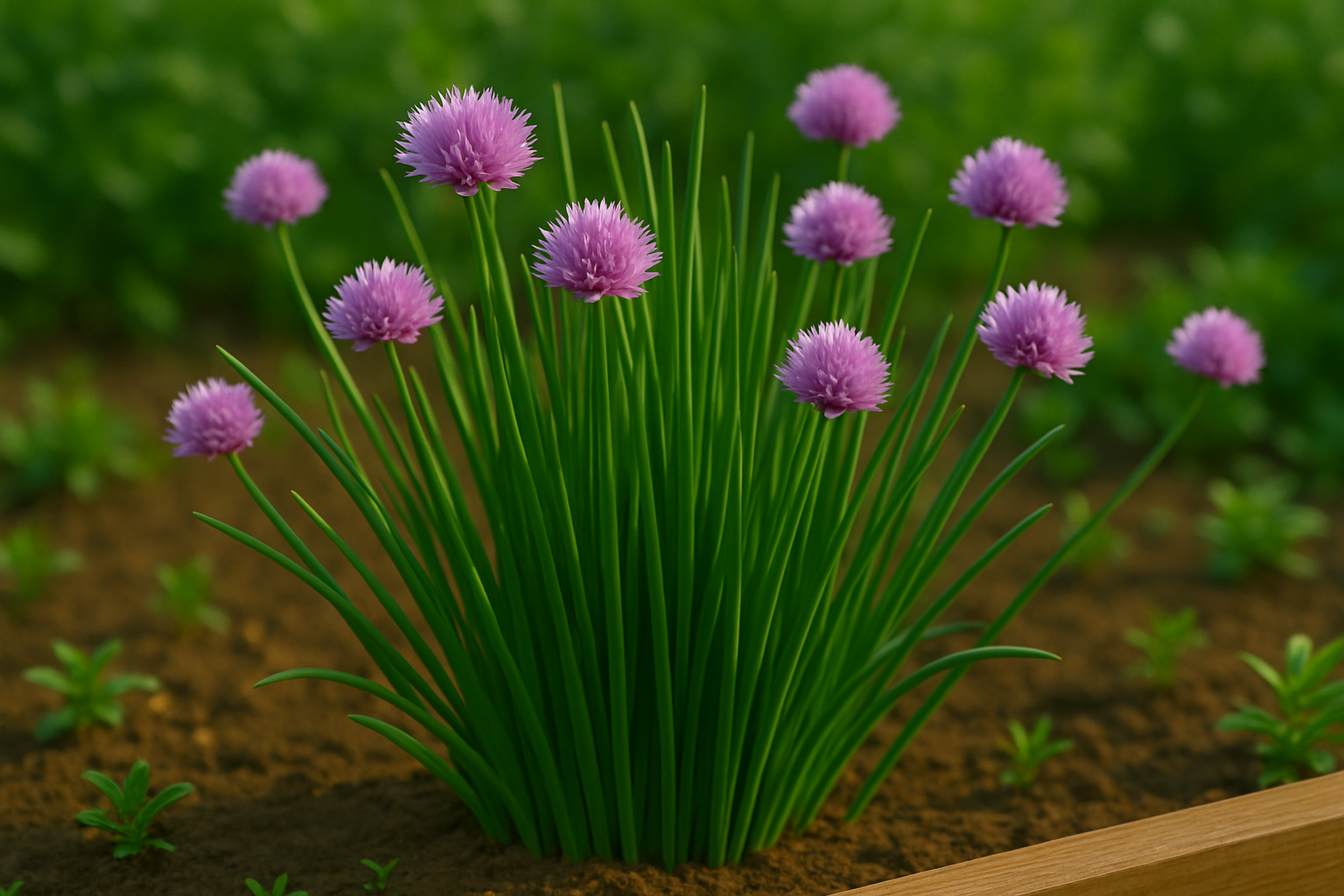Understanding Chives Bolting and Flowering
Bolting in chives refers to the rapid growth of a flower stalk, usually followed by seed production, which signals the end of the prime leaf-harvesting period. This process is triggered by longer daylight hours and warmer temperatures in late spring or early summer.
Chives tend to bolt when days consistently reach 12 hours of sunlight or more, especially if a sudden warm spell follows a cooler period. You’ll notice chives starting to bolt when stems elongate quickly, become noticeably thicker and firmer, and small, round flower buds begin to appear at the tips.
Gardeners and cooks should watch for these signs because once chives flower, their leaves often become tougher and less flavorful, making them less desirable for culinary use. However, the blossoms themselves are edible and attractive, providing both a visual and taste boost to salads and dishes.
If you want a steady supply of tender chive leaves, regularly snip off flower buds as soon as they form to delay bolting. On the other hand, letting some chives flower can attract pollinators to your garden and provide seeds for future planting.
Understanding bolting helps you decide whether to harvest, prune, or let nature take its course based on your garden goals.
Should You Let Chives Flower? Pros and Cons
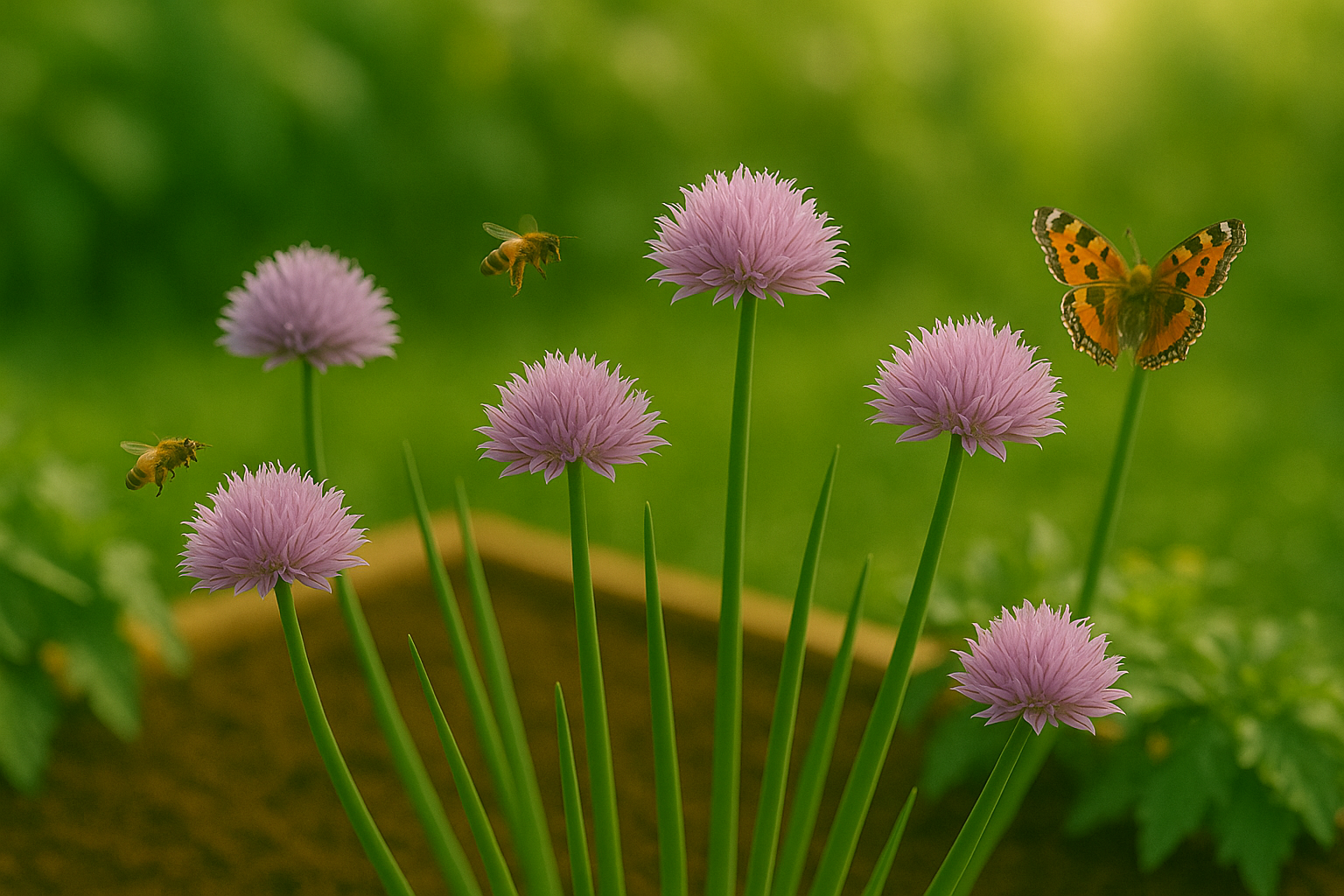
Letting chives flower in your garden comes with several appealing benefits. For starters, their globe-shaped purple blooms are not only beautiful—they also attract bees, butterflies, and other friendly pollinators, boosting biodiversity in your yard. The chive blossoms are edible too, adding a mild onion flavor that’s delicious sprinkled over salads or used as a colorful garnish.
However, there are some drawbacks to keep in mind. As chives channel energy into flowering, their leaves can become tougher and develop a stronger, sometimes bitter flavor, making them less ideal for recipes that rely on that fresh, delicate taste. You’ll also notice that leaf growth tends to slow down during and after flowering.
If your main goal is an attractive herb bed and supporting pollinators, letting chives bloom is a win-win. But if you want the best-tasting, most tender leaves for cooking, it’s smart to snip off flower buds as they appear—this directs growth back to the foliage.
There’s a common myth that flowering will harm or kill your chive plant, but this isn’t true; chives are perennial and bounce back well, even if allowed to bloom. Ultimately, the decision depends on whether your priority is culinary harvest or ornamental charm.
Many gardeners find a balanced approach—allowing a few flowers for bees and beauty while trimming the rest for the kitchen—offers the best of both worlds.
Can You Still Use Chives and Blossoms After Flowering?
You can definitely still use both chive leaves and their lovely purple blossoms after flowering, though there are some differences to keep in mind. Once chives bloom, the leaves often become tougher and develop a stronger, sometimes slightly bitter flavor. This doesn’t make them inedible, but they might not be as tender or mild as pre-flowering chives.
If you plan to use the leaves, harvest young, green stalks and avoid any that feel woody. A quick chop and brief sauté can help soften any tougher bits.
The blossoms themselves are entirely edible and offer a delicate onion-garlic flavor along with a pop of color—perfect for tossing into salads, compound butters, or using as a garnish for soups and eggs. When picking chive blossoms, snip the flowers just as they fully open for the best taste and texture. Remove any faded or discolored petals, and rinse them gently under cool water.
For both leaves and blossoms, use a sharp, clean pair of scissors to avoid crushing the plant. Try to harvest in the morning when flavors and turgor are at their peak. Even after flowering, chives remain a versatile and beautiful addition to your kitchen.
How to Prune and Cut Back Chives After Flowering
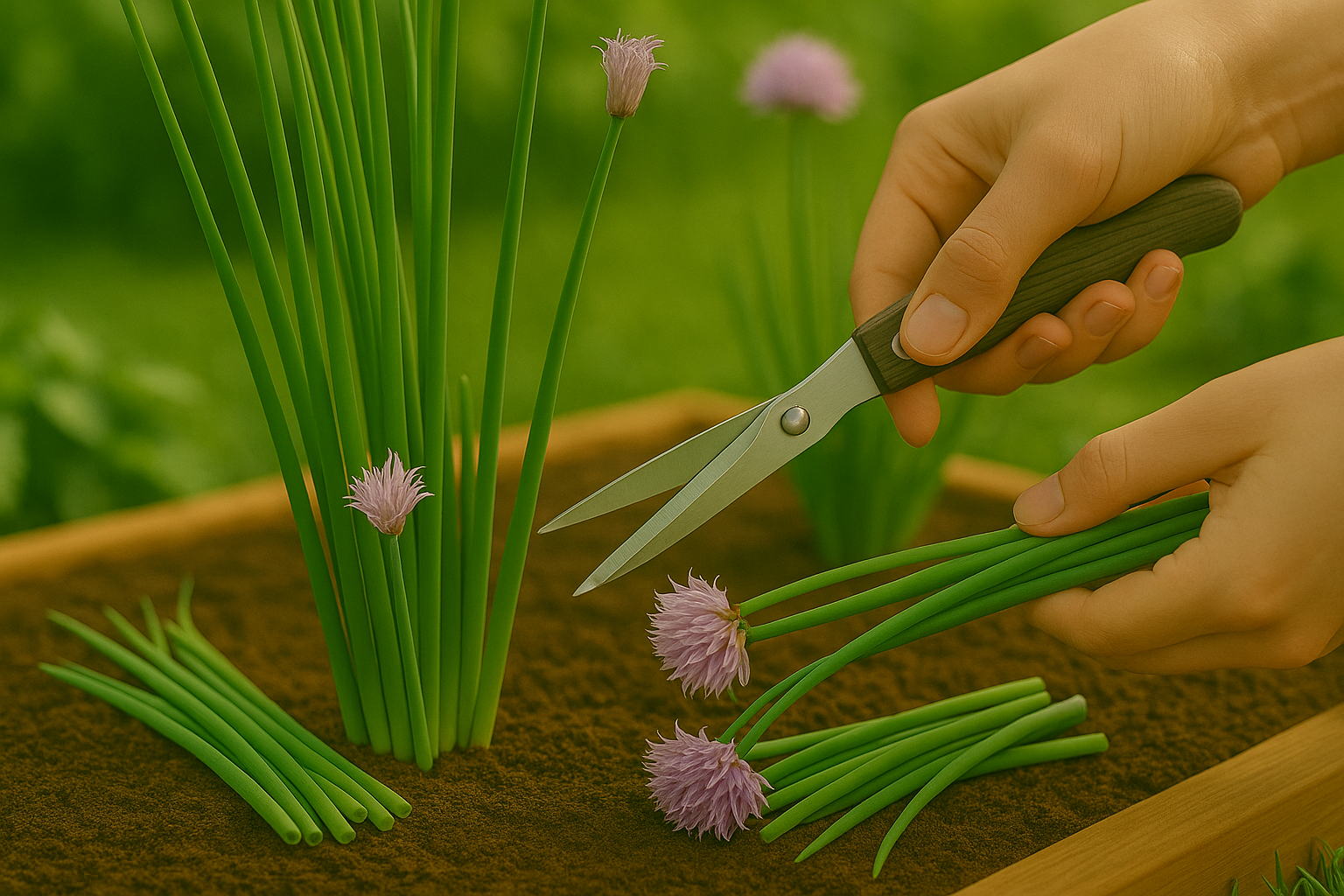
Once chives have finished flowering and the blooms begin to fade, it’s time to prune them back to keep the plants healthy and productive. Start by grabbing a sharp pair of garden shears or clean kitchen scissors; a clean cut helps prevent disease.
First, remove all faded flower stalks by cutting them down to the base. This not only tidies up your plant but also helps prevent the chives from self-seeding and spreading seeds throughout your garden. Next, give the entire clump a good haircut by cutting the foliage down to about 1 to 2 inches above the soil.
Don’t worry—this might seem drastic, but chives are hardy and will quickly regrow lush, tender shoots. The best time to do this heavy trim is right after the flowers have faded, typically in late spring to early summer. If you notice any yellowing or floppy stems, remove those as well to encourage new, vigorous growth.
Remember to dispose of the spent flower heads in your compost or green waste bin rather than letting them dry on the ground, which helps avoid unwanted self-sowing. Water the chives well after pruning, and optionally apply a balanced fertilizer to give them a boost.
With regular pruning, ideally two to three times throughout the growing season, your chives will stay neat, flavorful, and productive—ready for whenever you need a fresh snip in the kitchen.
Maximizing Chive Growth and Preventing Early Bolting
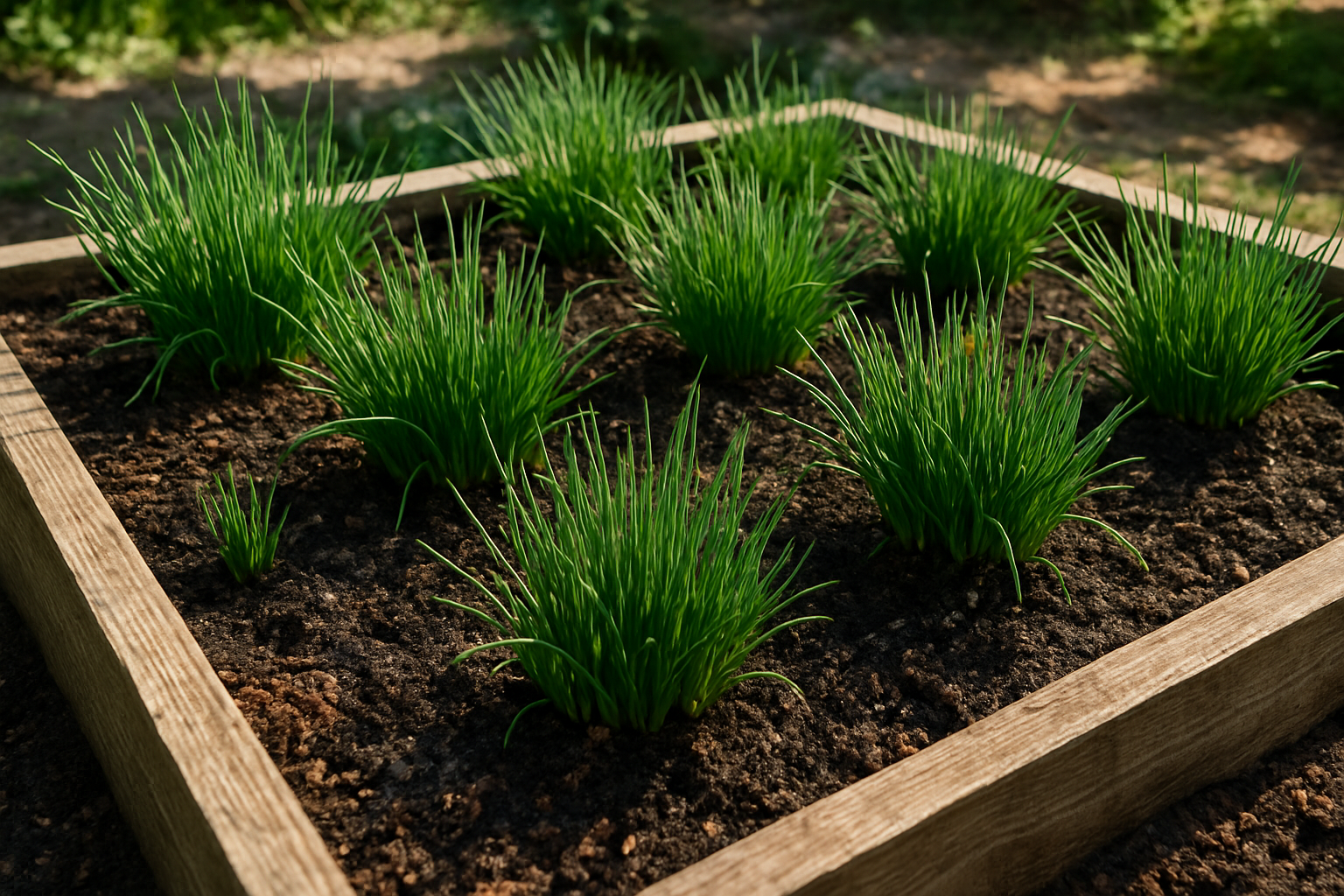
To get the most out of your chives and keep them lush, focus on the right growing conditions. Chives thrive in well-drained, fertile soil rich in organic matter—think compost or aged manure. They prefer full sun but can tolerate some shade, especially in hot climates where too much heat can stress the plants.
Be consistent with watering: the soil should stay moist but never soggy. Mulching helps retain moisture and keeps roots cool.
One easy but often overlooked tip is to harvest your chives regularly. Snipping the leaves encourages fresh growth and delays bolting, which naturally occurs when chives produce flowers in late spring or summer to complete their life cycle. However, stress from drought, poor soil, or overcrowding can cause premature bolting—flowers and seed heads forming too early—which stops leaf production and impacts flavor.
By keeping your chives happy and stress-free, you can enjoy a steady supply of tender, flavorful leaves all season long. Remember, leaving some flowers is fine if you want to support pollinators, but regular harvesting is key to maximizing leafy growth and extending your harvest period.
Creative Uses for Chive Blossoms in the Kitchen
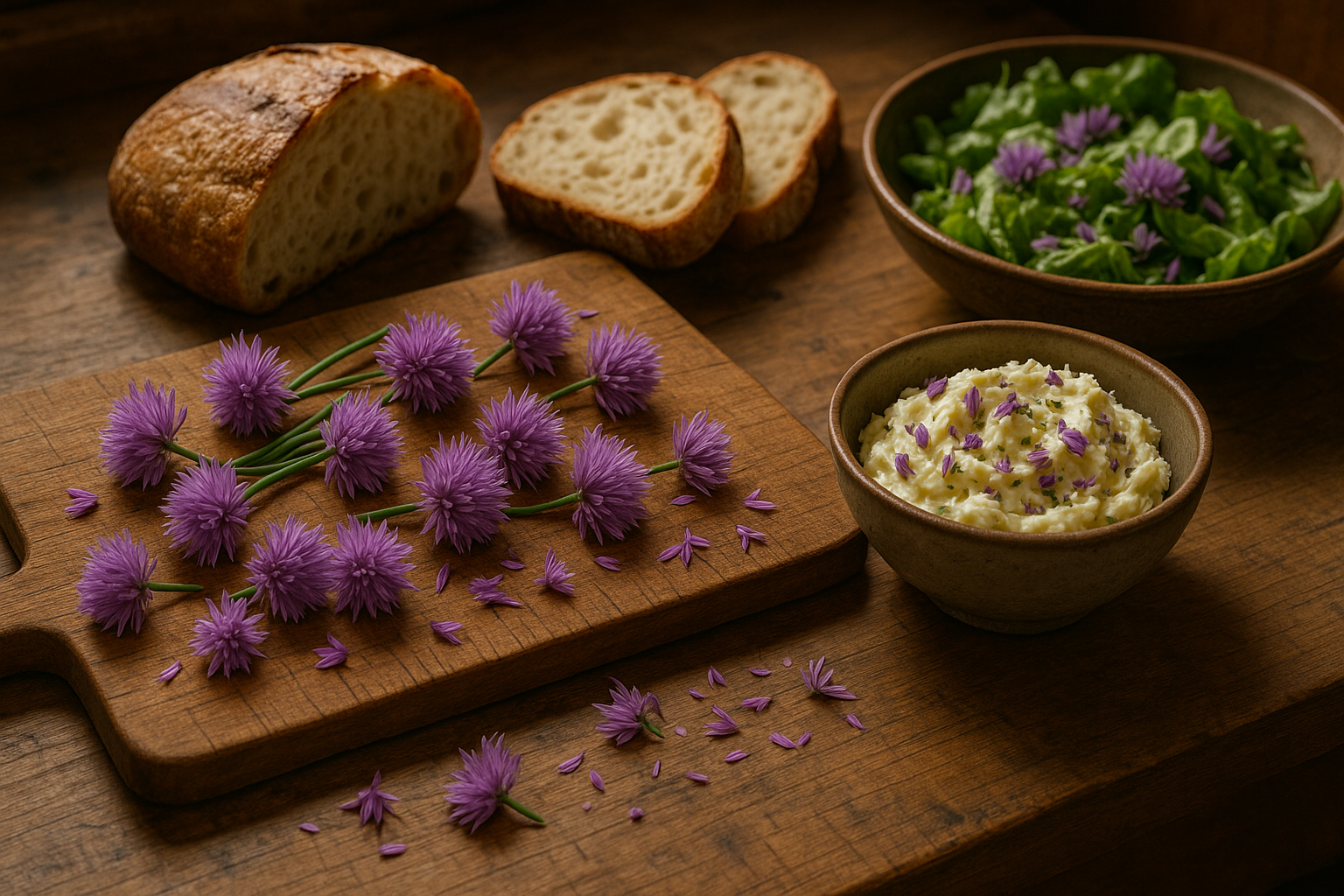
Chive blossoms aren’t just pretty—they’re edible and add a mild onion flavor and a pop of color to many dishes. Sprinkle the purple florets over fresh salads or creamy potato soups to create instant visual appeal and a gentle bite, or infuse the flowers in vinegar for a flavorful, rosy-pink condiment you can use in homemade dressings.
To make an easy chive blossom butter, simply mash a few florets into softened butter with a pinch of salt, then spread it on crusty bread or melt it over grilled veggies. For a quick garnish, separate individual blossoms from the head and scatter them over scrambled eggs, pasta, or roasted potatoes.
If you have more than you need right away, keep the stems in a glass of water—much like a bouquet—and store them in the fridge for up to a week. Alternatively, gently wrap them in a damp paper towel, place them in a resealable bag, and refrigerate.
Chive blossoms are completely safe to eat when grown without pesticides or chemicals; just rinse and pat dry before using. Whether as dainty embellishments or savory infusions, these blossoms are a simple way to bring fresh, garden-inspired flavor to your kitchen creations.
Summary and Tips for Healthy Chives All Season
Keeping your chive plants healthy and productive throughout the season starts with managing bolting—the sudden flowering that can slow leaf growth. When you notice buds forming, pinch off the flower stalks early to encourage more leafy shoots. Chives focus their energy on seed formation once they bloom, so cutting flowers helps maintain leaf production.
For extended harvests, trim the outer leaves regularly instead of cutting the entire clump. This allows the center to keep growing. Water consistently and feed with a balanced, mild fertilizer after each heavy harvest to keep your plants strong.
Dividing chive clumps every few years helps maintain their vigor and prevents overcrowding. To learn more, check trusted gardening sites like the RHS or explore YouTube tutorials for step-by-step demonstrations. Don’t forget to visit recipe blogs for tasty ways to use chives—adding them fresh to salads, eggs, or potatoes brightens meals and ensures nothing from your garden goes to waste.
